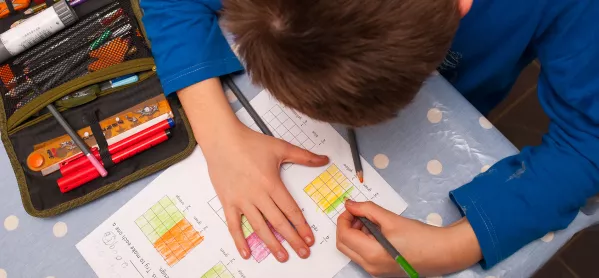The discussion around whether it is better to set for maths or teach mixed-ability groupings is an age old one, but having done a lot of research in this area, I have always been persuaded by the efficacy of true mixed-ability grouping.
Putting this into practice, though, is difficult. However, three years ago I took the plunge. And the children are starting to see the benefits.
As a guiding principle throughout the process I tried to focus on three things:
-
What problem am I trying to solve?
-
What does the research evidence tell me?
-
What do I need to overcome to achieve my goal?
What was the problem?
In the year groups that were setting, between 25 per cent and 40 per cent of each year group were in the lowest ability groups, with between 30 and 75 per cent of the disadvantaged children in these cohorts being taught in the “bottom set”.
As a result of this, the difference in both outcomes and progress for disadvantaged pupils in mathematics was widening, compared to their non-disadvantaged counterparts.
From a social mobility standpoint, it appeared that setting was suppressing the potential of our disadvantaged mathematicians.
What did the research say?
The available research pointed to the benefits of mixed-ability teaching, including social equitability, narrowed diversity of attainment, and children of basic problem-solving ability being able to observe and learn from their more experienced peers (Whitburn, 2001).
Additionally, I felt that improving pupil self-perception, and teacher expectations, of what the classically “slower grasping” children could do would help them to better engage with the subject.
What challenges were there?
I often find when introducing a new (or radically different) approach to developing learning, that helping change the beliefs of staff is one of the first steps to embedding change successfully.
All people, including myself, are subject to some level of confirmation bias (trusting what supports their current view and disregarding anything that challenges it).
By doing research, using techniques that are demonstrably successful, and providing a strong evidence base, that bias can be overcome.
In my case, I had all of the evidence to hand, but needed to make it clear what the benefits for the children’s learning would be.
What did I do?
Some teachers, I knew, would take to it straight away; others had worked for some time in an opposing mode and would need more CPD and support to help effect the changes.
By helping teachers go back to the roots of good mathematics teaching (using concrete-pictorial-abstract approaches), pupils at differing levels of understanding are able to access similar problems.
Sourcing good quality problems (the NCETM and Nrich maths project are good places to start) helps to generate mathematical conversations between children, exposing those who were slower to grasp concepts to a greater depth of vocabulary than they previously would have encountered.
Teachers use their input as an assessment tool, and quickly direct their intervention in the lesson to those who need it, cutting away groups of children to work without adult support as they develop confidence and fluency.
In order to ensure children don’t develop gaps in their understanding, same day (where possible) interventions are run by teachers to address misconceptions from the day’s lessons.
What was the impact?
When measuring the current impact of the change in approach, some caveats need to be applied. The move to mixed-ability teaching was introduced alongside developing mastery, using pictorial examples with pupils more effectively and a change in mathematics scheme. Any effect on pupil learning is likely to be as a result of a combination of these approaches rather than being attributed to any single one.
However, last year saw a huge jump in mathematics progress at the end of KS2, and in-year data shows improving numbers of pupils in all groups attaining the expected standard.
External moderation (including Ofsted) has commented on the quality and consistency of approach for all groups of pupils in their ability to problem solve, and the next step is to further develop peer assessment within mixed-ability groupings.
Jon Parsons is deputy headteacher at White Meadows Primary Academy






